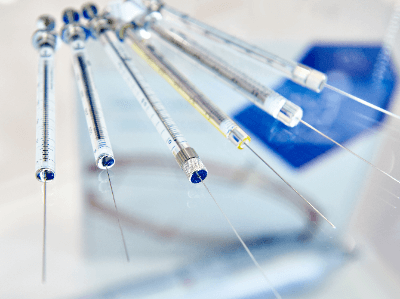What Is a Micro Syringe?

A micro syringe is a precision laboratory tool designed for injecting very small volumes of liquid samples into analytical instruments such as liquid chromatographs (HPLC) and gas chromatographs (GC). These syringes range in volume from 0.1 µL to 500 µL and can be constructed from materials like glass or metal, necessitating careful selection based on the specific analytical requirements and instrumentation.
With the advent of autosamplers, which automate the sample injection process, the manual use of micro syringes has seen a decline. However, they remain indispensable for applications requiring precise manual control over sample volume.
Uses of Micro Syringes
Micro syringes are extensively employed in chromatography for the precise injection of samples into chromatographs. Depending on the instrument’s setup, they can be used with both autosamplers and manual injectors, offering flexibility in handling complex sample matrices or minute sample volumes that are challenging for automated systems.
Principle of Micro Syringes
Using a micro syringe involves several critical steps to ensure accuracy and prevent contamination:
- Inspect the needle for damage before use.
- Rinse the syringe with the sample to be injected to prevent cross-contamination.
- Aspirate slightly more sample than needed, then expel air bubbles before injection.
- Inject the sample carefully into the chromatograph, ensuring the needle is fully inserted and air bubbles are minimized.
- Rinse the syringe post-injection to avoid carryover effects.
Types of Micro Syringes
Micro syringes are categorized by their needle tip design, tailored for specific chromatography applications:
- Liquid Chromatography Syringes: Feature a needle with a right-angle tip.
- Gas Chromatography Syringes: Have a sharp-angled needle tip to penetrate the septum without damage.
Using the incorrect syringe type can cause damage to the chromatograph or impede sample injection.
Structure of Micro Syringes
A micro syringe comprises a barrel, a plunger, and an attached needle. The plunger’s design, especially in syringes of low volume, includes a guide to ensure consistent volume collection and to prevent damage from misaligned plunging. The broad range of available volumes allows for the selection of a syringe that matches the analytical task at hand precisely.